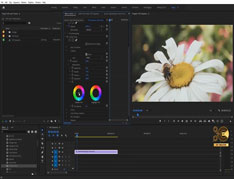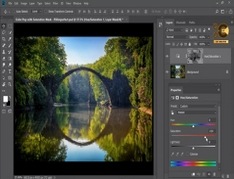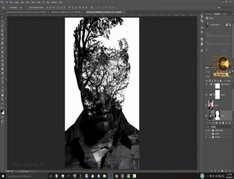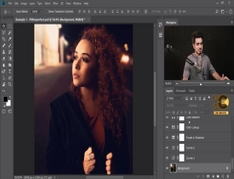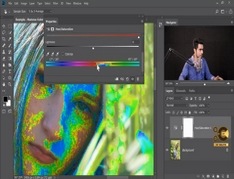You must need to login..!
توضیح
تکنیک نورپردازی هالیوود که شما باید بدانید!(نورپردازی 3 نقطه ای)
برای دانلود رایگان تکنیک نورپردازی هالیوود که شما باید بدانید!(نورپردازی 3 نقطه ای) با کیفیت full hd 1080p از پلیر سایت یا لینک زیر استفاده کنین
لینک دانلود Link download
نور سه نقطه ای اغلب تصاویر ویدئوهای تخت شرکتی یا سریال های روز را بهمراه می آورد. اما آیا این سیستم امروزه هنوز مرتبط است یا مفهوم مهمی است که می توانیم از آن برای هدایت خود استفاده کنیم ، هر شرایطی که باشد؟ نیل اوسمان به ما کمی تشریح می کند.
وقتی اواخر دهه 1990 کارم را شروع کردم و در دوره های فیلم شرکت کردم ، اولین – و اغلب تنها – چیزی که به من در مورد روشنایی آموختند ، تنظیم سه نقطه بود. یک داوطلب جلوی کلاس نشسته و معلم خصوصی سه نفر از منابع سخت تنگستن را در اطراف خود ترتیب می دهد. البته امروز ، این نمایش احتمالاً با وسایل LED یا شاید جعبه های نرم فلورسنت باشد ، اما آیا روش اصلی هنوز معتبر است؟ آیا روش بهتری برای نزدیک شدن به نورپردازی در قرن 21 وجود دارد؟
منبع اصلی نور ، همان چیزی که چهره سوژه را مدل می کند ، به عنوان نور اصلی شناخته می شود. ممکن است از بالای دوربین بیاید ، صورت را به صورت صاف ، یکدست ، چاپلوس یا از کنار نشان دهد و با برجسته سازی جای زخم ، چین و چروک و سایر نقایص ، شخصیت بیشتری به آن اضافه کند. یا ممکن است یک کلید رامبراند باشد ، از یک زاویه سه چهارم می آید که یک طرف صورت را کاملاً روشن می کند اما فقط یک مثلث نور را روی گونه دیگر می اندازد. تغییرات بی پایان است.
چراغ پر ، سایه های ایجاد شده توسط کلید را روشن می کند. این تقریباً همیشه یک منبع نرم است به طوری که هیچ سایه قابل توجهی از خود ایجاد نمی کند و از کلید کم نورتر است. میزان کم نورتر شدن حالت شلیک حیاتی است و به عنوان نسبت کلید به پر شدن شناخته می شود. برای مثال یک نسبت بالاتر (پر رنگ تر) برای یک فیلم ترسناک یا هیجان انگیز به خوبی کار می کند ، در حالی که نسبت کمتری (پر نورتر) اغلب در کمدی ها و عاشقانه ها دیده می شود.
سرانجام ، نور پس زمینه حاشیه ای از نور را در اطراف سوژه ایجاد می کند ، آنها را از پس زمینه جدا می کند و به طور کلی به جلوه و زیبایی عکس اضافه می کند.
اما نورپردازی سه نقطه ای به هیچ وجه ماده اصلی فیلمبرداری بی انتها نیست. در دوران طلایی هالیوود ، سیستم های بسیار پیچیده تر مد بودند. جان آلتون در سال 1941 در کتاب “نقاشی با نور” با نوشتن چندین پر کردن و حتی منبع جداگانه برای لباس بازیگر ، از یک سیستم هشت نقطه ای نوشت. از آن زمان به بعد سلیقه و فناوری بسیار پیشرفت کرده است و معمولاً به سمت سادگی و واقع گرایی گرایش پیدا کرده است.
امروزه ، به نظر می رسد مهمترین عامل در طراحی نور انگیزه باشد: واقعاً نور از کجا می آید؟ اما زمانی که انگیزه را با سیستم سه نقطه ای ترکیب می کنیم به قلب فیلمبرداری معاصر می رسیم. نه ، یک DP روی یک مجموعه قرار نمی گیرد تا سه لامپ را در اطراف هر بازیگر ترتیب دهد ، اما ما همیشه به این سه مفهوم کلید ، پر کردن و نور پس زمینه فکر می کنیم.
Three point lighting often conjours up images of flat corporate video or daytime soap operas. But is the system still relevant today, or is it an important concept we can use to guide us, whatever the situation? Neil Oseman offers us some dissection.
When I began my career and attended film courses in the late 1990s, the first — and often only — thing I was taught about lighting was the three-point setup. A volunteer would be seated in front of the class and the tutor would arrange a trio of hard tungsten sources around him. Today, of course, that demonstration would probably be with LED fixtures, or maybe fluorescent softboxes, but is the underlying technique still valid? Is there a better way to approach lighting in the 21st Century?
The main source of light, the one that models the subject’s face, is known as the key light. It might come from just above the camera, rendering the face in a flat, even, flattering manner, or from the side, adding more character by highlighting scars, wrinkles and other imperfections. Or it might be a Rembrandt key, coming from a three-quarter angle that lights one side of the face completely but only throws a triangle of light onto the other cheek. The variations are endless.
The fill-light illuminates the shadows cast by the key. It is almost always a soft source so that it casts no noticeable shadows of its own and is dimmer than the key. How much dimmer is critical to the mood of the shot and is known as the key-to-fill ratio. A higher ratio (darker fill) would work well for a horror movie or thriller, for example, while a lower ratio (brighter fill) is often found in comedies and romances.
Finally, the backlight produces a rim of light around the subject, separating them from the background, and generally adding to the polish and beauty of the shot.
But three-point lighting is by no means a timeless staple of cinematography. In Hollywood’s Golden Era, far more complicated systems were the fashion. DP John Alton wrote of an eight-point system in his 1941 book Painting with Light, adding multiple fills and even a separate source for the actor’s clothes. Taste and technology have moved on greatly since then, generally trending towards simplicity and realism.
Today, motivation may appear to be the most important factor in designing lighting: where would light realistically be coming from? But it’s when we combine motivation with the three-point system that we get to the heart of contemporary cinematography. No, a DP does not walk onto a set to arrange three lamps around each actor, but we are always thinking of those three concepts of key, fill and backlight.



